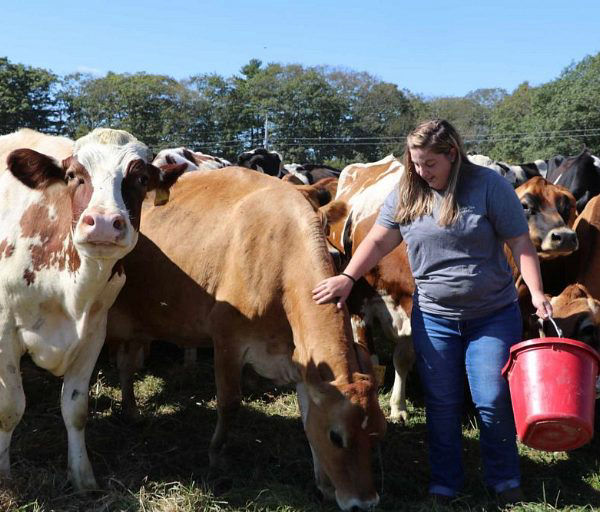

Compost and manure contain important nutrients that are a natural way of fertilizing and enhancing soil health.
Compost:
Composting is a natural process where microorganisms recycle organic matter into nutrient rich soil. Natural organic material for composting is made up of dead leaves, plants, trees, and animal waste found in the woods. You can create the same natural composting process in your backyard or on your farm in a quicker composting process using food scraps, dead leaves, yard waste, and even livestock manure.
Compost can be added to lawns, fields, and crop beds to enhance the soil’s health and nutrients naturally. Compost is not a passive pile of manure and organic material. Creating compost is an active process that requires aeration, proper temperature, moisture, and the right mix of materials. For more information on how to create a compost pile, check out:
The Northern RI Conservation District led a composting workshop at a Scituate Conservation Commission Annual Meeting. Below are links to the resources provided at the workshop. For any questions, please contact Marina Capraro.
• Composting Guide and Composting Resources
by NRICD Composting Workshop
• Composting in Providence
by Groundwork Rhode Island's Harvest Cycle
• Composting at Home
by Environmental Protection Agency (EPA).
Manure as Fertilizer:
Straight manure, or animal feces, is high in nitrogen and phosphorus, a main ingredient in commercial fertilizers. Manure used as fertilizer should come from herbivores (i.e., plant-eating animals such as chickens, sheep, cows, horses, etc. and never from cats, dogs, or pigs) for vegetable gardens or compost piles. Some people apply manure directly to the soil. Direct manure as fertilizer can contain an excess of nutrients for the soil as well as a higher risk for weeds and pathogens getting into your soil. Excess nutrients from manure or fertilizer can pose environmental risks, such as water pollution from runoff. It is advised to use caution when applying manure directly as fertilizer.
Concerns of Manure:
Manure can contain harmful pathogens and carry more weed seeds that can impact your soil and growing practice. If you are applying direct manure as fertilizer to food crops, you should not eat the food harvested for at least three to four months (90 to 120 days) from time of manure application. At that point the microorganisms in the soil have ideally broken down the manure enough to reduce the risk of pathogen contamination to crops. Direct manure can also contain weed seeds that can increase weed growth in your garden. To reduce risks of pathogens and increased weeds consider composting your manure. During the composting process, the organic matter temperature should rise to 131°F for at least three days, which will kill any pathogens and weed species. Direct manure fertilization can also impact some crops by burns or can even lose nutrients from the manure to the atmosphere. Proper direct manure fertilizer application is important to reduce pathogenic risks to humans, reduce weed growth, and increase crop growth. To learn more about nutrients of manure, how to properly apply fertilizer, and how to calibrate your manure spreader, check out:
• Plant Nutrients
by UMass Extension
• Fertilizing a Garden
by Texas A&M Agrilife Extension
• Manure Spreader Collaboration
by The University of Vermont Extension
Making Compost:
Compost can consist of many ingredients such as manure, leaves, grass, coffee, food scraps, cardboard, etc. These ingredients are combined into a bin, container, or environmentally friendly storage structure in layers of carbon (C) and nitrogen (N) based ingredients. Once combined, the organic material goes through three different phases (cold compost, hot compost, and maturing soil). During these phases the microorganisms decompose the organic matter. Temperature will reach 131⁰F or higher during the decomposition, or hot compost phase, killing harmful pathogens, weeds, etc. in the pile. The organic matter then breaks down to become nutrient rich soil. Composting is an active process that requires proper aeration (adding oxygen to the pile) by mixing the pile, temperatures, and moisture content.
Additional Manure and Composting Resources:
• Herbicide Carryover in Hay, Manure, Compost, and Grass Clippings
by North Carolina State University
• Compost Site Management: Weed Seed Germination Testing
by Vermont Agency of Natural Resources Department of Environmental Conservation
• Fertilizer Materials and Soil Nutrient Amendment
by UMass
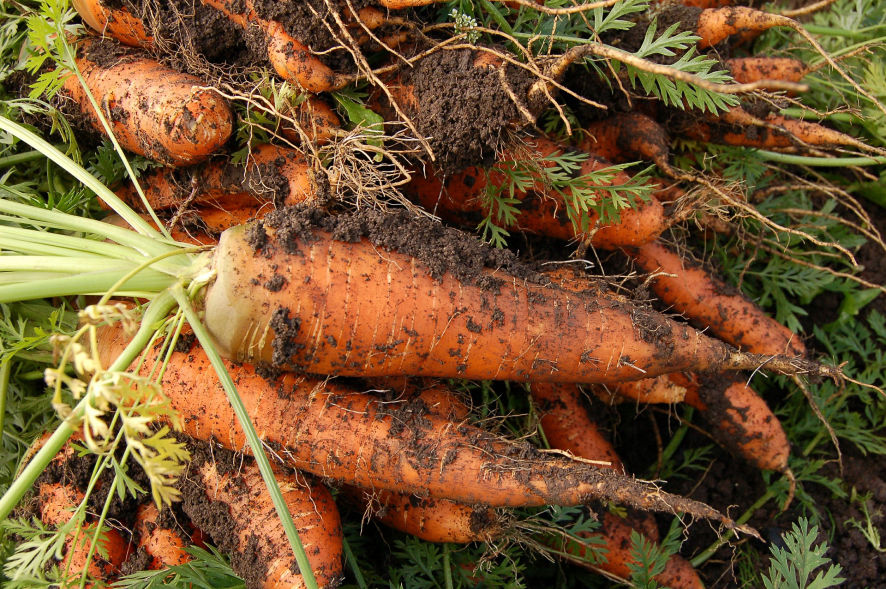
Manure and compost made with manure can vary greatly on many different factors including livestock type, bedding, feed, age of manure or compost, etc. It is important to know what you are seeking for manure and ask the livestock manure or compost provider some questions. Below are some questions for manure seekers to ask themselves when considering a manure source and questions they can ask a provider when selecting a manure source.
DISCLAIMER
This is a “no guarantees, use at your own risk” service. Manure and compost are generally not certified to be weed-free or organic. The material may not be suitable for all intended uses.
Providers are not responsible for hauling costs or any costs associated with vehicle/dump-truck rentals, etc. This is a voluntary, community project, so please be considerate of those participating in this service.
The Rhode Island Conservation Districts and Farm Fresh Rhode Island cannot guarantee the quality of compost or manure advertised, or guarantee any particular result for its use. Under no circumstances shall The Rhode Island Conservation Districts and Farm Fresh Rhode Island be responsible for any loss or damage caused by or resulting from the exchange of manure or compost under this program.
To ensure you are getting manure that has been composted thoroughly and safely, follow the guidelines outlined on this page.
IMPORTANT! You cannot be a Provider if pyridine carboxylic herbicides (aminopyralid, clopyralid, fluroxypyr, picloram, and triclopyr) were used on livestock hay or pastures. Their presence may kill vegetation if they are in manure or compost applied to soil.
A soil test is very important and it is recommended that you test your soil before applying anything. Ideally, you should test your soil once per year. Soil tests can help improve soil health, optimize crop production, save you money, and reduce environmental risks. Testing your soil can give you insight on your soil health and help you determine what your soil needs are before treating the soil. You might also learn if your soil has too much of one nutrient, such as phosphorus, which can harm your plants and increase environmental risks. If you have too many nutrients in the soil it can lead to nutrient runoff, causing pollution to water resources and having a domino effect on the environment and your family.
You can test your soil at The University of Massachusetts (UMass) or The University of Connecticut (UConn). To Learn more on how to test your soil, check out “How to Take a Soil Sample for Testing.” If you have questions about your soil test results, you can reach out to the University that you sent your test to or your Conservation District.
Consider what you will be using the manure or compost for, such as a garden bed, field, or landscaping as mulch. Keep in mind your timeline, if you plan on harvesting crops from the nutrients added, etc. Manure with mostly bedding is good for landscaping, while little to no bedding can be better for composting in your garden. Bedding types can change the rate of compost, such as straw that breaks down quicker than cedar. Keep in mind what you will be using the manure or compost on. For example, direct manure applied to seedlings can provide excess phosphorus to the plants and burn the plants. It is recommended if you are planning on using the manure on seedlings to either apply the manure around the roots of the plant, and not directly to the plant, or you can apply compost directly to the seedling. With manure planning you can add either manure or compost depending on the nutrients the plant and soil require.
You can calculate how much manure or compost you will need by multiplying the depth by the area where you want to put the manure or compost:
Step 1: Calculate the area of the space you want to put the manure or compost in.
Area = Length x Width of space
Step 2: Measure the depth of the space the manure or compost pile or area that it will be applied.
Step 3: Calculate the amount of space needed for the manure or composting pile.
Depth x Area = Amount of Manure or Compost needed
This might depend on how much manure or compost you might need. Be sure to be aware of this when you speak with a provider. Some providers might have a means to assist in transporting manure or composting. If either you or the provider are unable to obtain transportation, please reach out to your local Conservation District who might be able to assist in transporting manure or compost for you.
Eastern Conservation District: Bristol and Newport Counties
Sara Churgin - District Manager, schurgin.ericd@gmail.com, 401-934-0842
Southern Conservation District: Kent and Washington Counties
Gina Fuller - District Manager, gfuller@sricd.org, 401-661-5761
Northern Conservation District: Providence County, Rhode Island
Marina Capraro - Agriculture & Forestry Program Manager, mcapraro.nricd@gmail.com, 401-934-0840 ext. 3
“Aged” manure might be closer to finished compost than “fresh” manure. It is not guaranteed that the manure or compost you seek from a provider is properly composted. It is important to talk with your provider about the material, and if you are seeking aged material ask if you can pick up “aged” material prior to meeting up with the provider so they can be prepared if they need to gather material at the back of their pile.
Manure used as fertilizer should come from herbivores (i.e., plant-eating animals such as chickens, sheep, cows, horses, etc. and never from cats, dogs, or pigs) for vegetable gardens or compost piles. Manure from other animals can contain pathogens that are more likely to survive and can infect people.
Bedding in manure can be more beneficial for uses like landscaping, while minimal bedding can be more beneficial for compost in your garden. The type of bedding can also increase or decrease the rate at which the manure will break down. For instance, straw will increase the rate of composting, while cedar bedding will take longer to break down.
The age of the manure you might want will depend on your plans for using the manure. It is important to talk with your provider about the material, and if you are seeking aged material ask if you can pick up “aged” material prior to meeting up with the provider so they can be prepared if they need to gather material at the back of their pile.
Manure and compost are two different nutrient additives to the soil. Manure can be fresh or aged, while compost is a byproduct of actively decomposing organic matter that can contain manure as a source of nitrogen. Check out manure and composting differences above and the Healthy Farms, Healthy Watershed Fact Sheet 2: Manure Management.
Some livestock farms have a plentiful supply of livestock manure year 'round, while others have a more limited supply of manure. The amount of manure you can receive from a livestock farmer might be dependent on the time of year, accessibility, and the resources you and/or the livestock farmer has to transport the manure. Some livestock farmers might want to supply manure in larger quantities. Be sure to discuss available amounts of manure and transportation resources with your potential manure supplier.
List of Manure Providers > Click Here
List of Manure Truckers > Click Here
Need assistance with the transportation of manure or compost? Check out our list of local contractors that can assist in manure or compost transportation.
Need more help?
Contact your local Conservation District for assistance...

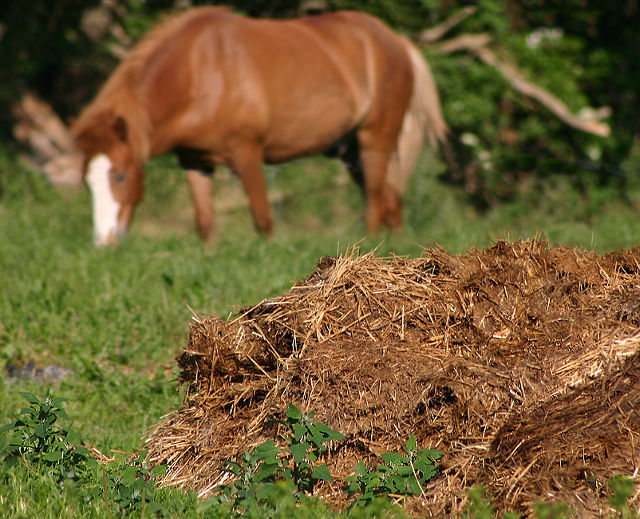
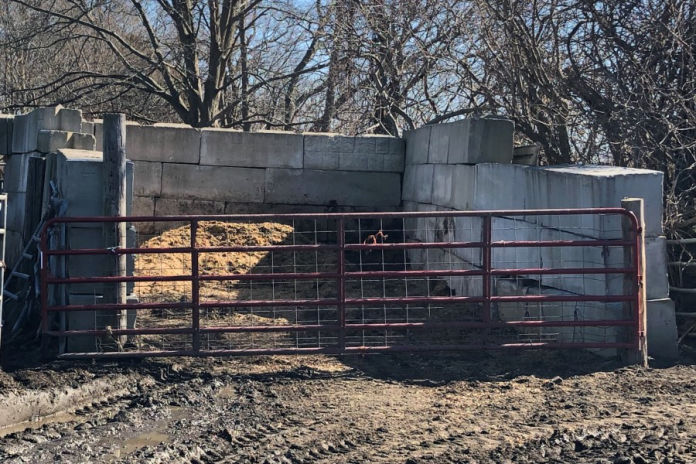
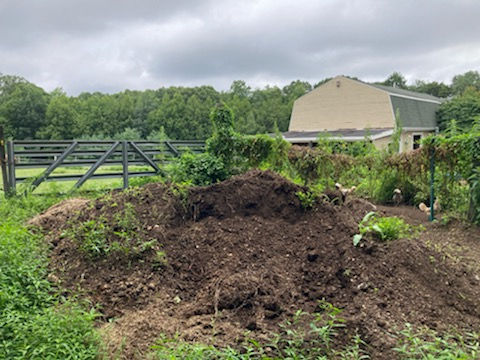
Built with Mobirise